Superfund Sites in Reuse in Florida
If you are having trouble viewing the map in your browser, click the 'View larger map' link below
Airco Plating Co.
The 2-acre Airco Plating Company Superfund site is located in a commercial and industrial area in Miami, Florida. The site has operated as an active metal plating facility since 1955. Waste handling practices contaminated soil and groundwater with metals and hazardous chemicals. The main threat posed by the site is the release of contaminants into the Biscayne Aquifer, the main source of drinking water for Miami-Dade County. EPA placed the site on the Superfund program’s National Priorities List (NPL) in 1990. EPA’s 1993 cleanup plan included extracting vapors from contaminated soil, capping remaining contaminated soil and treating groundwater. Land use restrictions make sure that site activities do not damage the protective cap or affect the groundwater treatment system. The on-site business, Airco Plating Company, Inc., provides plating services to aviation, aerospace and commercial industries.
For more information:
Alpha Chemical Corp.
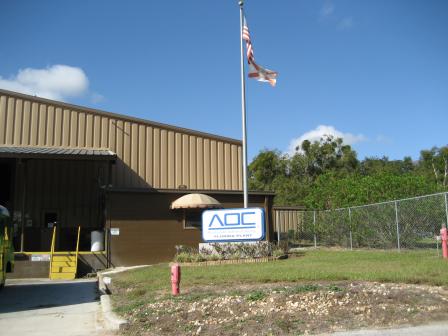 Alpha Chemical Corp.The Alpha Chemical Corporation Superfund site is located in Lakeland, Florida. Since 1967, the site has produced unsaturated polyester resin for fiberglass manufacturers. From 1967 until 1976, plant operators discharged plant wastewater, which contained small amounts of volatile organic compounds (VOCs), into an on-site pond. In 1983, EPA listed the site on the Superfund program’s National Priorities List (NPL). Cleanup activities included placing a protective cap over the former unlined pond area and monitoring on-site surface water and groundwater. After completing all cleanup activities, EPA removed the site from the NPL in 1995. Monitoring results show that cleanup goals have been met. Thanks to a partnership between EPA, the State of Florida and the potentially responsible party (PRP), the site is now clean and the community's drinking water supply protected. The successful cleanup of the site and improved disposal practices by the on-site business now protect the health of nearby residents and the environment. The success of the chosen remedy has enabled the continued operation of the on-site manufacturer as a productive business in the community.
Alpha Chemical Corp.The Alpha Chemical Corporation Superfund site is located in Lakeland, Florida. Since 1967, the site has produced unsaturated polyester resin for fiberglass manufacturers. From 1967 until 1976, plant operators discharged plant wastewater, which contained small amounts of volatile organic compounds (VOCs), into an on-site pond. In 1983, EPA listed the site on the Superfund program’s National Priorities List (NPL). Cleanup activities included placing a protective cap over the former unlined pond area and monitoring on-site surface water and groundwater. After completing all cleanup activities, EPA removed the site from the NPL in 1995. Monitoring results show that cleanup goals have been met. Thanks to a partnership between EPA, the State of Florida and the potentially responsible party (PRP), the site is now clean and the community's drinking water supply protected. The successful cleanup of the site and improved disposal practices by the on-site business now protect the health of nearby residents and the environment. The success of the chosen remedy has enabled the continued operation of the on-site manufacturer as a productive business in the community.
For more information:
Anodyne, Inc.
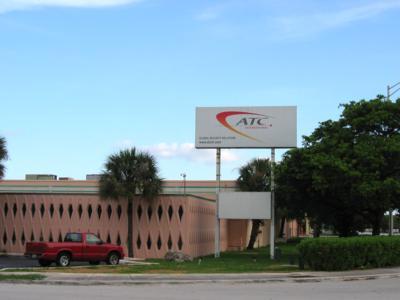 Anodyne, Inc.The 4-acre Anodyne, Inc. Superfund site is located in Sunshine State Industrial Park near North Miami Beach, Florida. Between 1960 and 1978, Anodyne and other companies used the site for a variety of industrial operations. Consumer products made at the facility included decorative trim, control panels and equipment dials. Site operators stored chemicals in aboveground tanks on site. They also disposed of wastes directly on the ground outside. Sources indicate that site operators may have disposed of waste in a deep on-site well. These improper storage and disposal practices contaminated groundwater and soil. The site overlies the Biscayne Aquifer, a shallow water table aquifer that is the primary source of drinking water for Miami-Dade and Broward counties. EPA placed the site on the Superfund program’s National Priorities List (NPL) in 1990. A 1993 cleanup plan included removal of contaminated soil, addition of clean soil to removal areas, and treatment and disposal of shallow contaminated groundwater. Treatment and long-term monitoring of groundwater continue. EPA supported the reuse of the site through EPA Region 4’s Prospective Purchaser Inquiry (PPI) process. The PPI process offers prospective purchasers fast, accurate and comprehensive information. Prospective purchasers are then able to make timely purchasing decisions. Today, several commercial businesses continue to operate in the former Anodyne facility. These include a packaged snack distribution center, a security firm office, a heating and air conditioning distributor, a storage container manufacturer and a parking facility.
Anodyne, Inc.The 4-acre Anodyne, Inc. Superfund site is located in Sunshine State Industrial Park near North Miami Beach, Florida. Between 1960 and 1978, Anodyne and other companies used the site for a variety of industrial operations. Consumer products made at the facility included decorative trim, control panels and equipment dials. Site operators stored chemicals in aboveground tanks on site. They also disposed of wastes directly on the ground outside. Sources indicate that site operators may have disposed of waste in a deep on-site well. These improper storage and disposal practices contaminated groundwater and soil. The site overlies the Biscayne Aquifer, a shallow water table aquifer that is the primary source of drinking water for Miami-Dade and Broward counties. EPA placed the site on the Superfund program’s National Priorities List (NPL) in 1990. A 1993 cleanup plan included removal of contaminated soil, addition of clean soil to removal areas, and treatment and disposal of shallow contaminated groundwater. Treatment and long-term monitoring of groundwater continue. EPA supported the reuse of the site through EPA Region 4’s Prospective Purchaser Inquiry (PPI) process. The PPI process offers prospective purchasers fast, accurate and comprehensive information. Prospective purchasers are then able to make timely purchasing decisions. Today, several commercial businesses continue to operate in the former Anodyne facility. These include a packaged snack distribution center, a security firm office, a heating and air conditioning distributor, a storage container manufacturer and a parking facility.
For more information:
Arkla Terra Property
The Arkla Terra Property Superfund site is located in Thonotosassa, Florida. From 1976 to 2006, several companies repaired and refurbished containers and underground storage tanks on site. Operators used solvents to clean the tanks. In 2000, the Florida Department of Environmental Protection (FDEP) found that site activities contaminated soil and groundwater. EPA added the site to the Superfund program’s National Priorities List (NPL) in 2009. EPA began cleanup in 2011. In February 2013, EPA completed thermal treatment of the source area. The treatment removed 1,491 pounds of contamination from the subsurface. EPA is currently evaluating whether additional treatment will further reduce groundwater contamination. EPA continues to monitor groundwater quality. Several commercial businesses occupy the 6.7-acre Arkla Terra Property. Businesses include an accounting company, an environmental consulting firm, an automotive store, a landscaping business and an industrial concrete cutting company. The area surrounding the Arkla Terra Property is primarily residential.
For more information:
B&B Chemical Co., Inc.
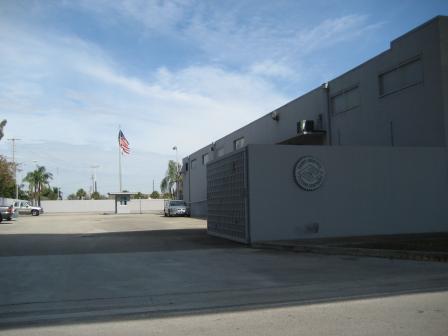 B&B Chemical Co., Inc.The 4.5-acre B&B Chemical Co., Inc. Superfund site is located in Hialeah, Florida. In 1963, B&B Tritech, Inc. (B&B) began manufacturing and mixing industrial cleaning products at the site. Many of the chemical containers rusted and broke, spilling their contents onto the ground. In 1981, construction workers working on a water pipe near the site reported skin irritation and burns. In 1985, an EPA investigation verified that facility operations and waste handling practices at the site had contaminated soil and groundwater. EPA added the site to the Superfund program’s National Priorities List (NPL) in 1990 and began monitoring site groundwater quality. As a result of treatment and monitoring, the groundwater currently meets federal and state drinking water standards. Land use restrictions are in place to help prevent potential human exposure to site-related contaminants in the future. Following cleanup, EPA took the site off of the NPL in 2014. Currently, B&B Tritech, Inc. retains ownership of the property and continues to manufacture chemical cleaning compounds.
B&B Chemical Co., Inc.The 4.5-acre B&B Chemical Co., Inc. Superfund site is located in Hialeah, Florida. In 1963, B&B Tritech, Inc. (B&B) began manufacturing and mixing industrial cleaning products at the site. Many of the chemical containers rusted and broke, spilling their contents onto the ground. In 1981, construction workers working on a water pipe near the site reported skin irritation and burns. In 1985, an EPA investigation verified that facility operations and waste handling practices at the site had contaminated soil and groundwater. EPA added the site to the Superfund program’s National Priorities List (NPL) in 1990 and began monitoring site groundwater quality. As a result of treatment and monitoring, the groundwater currently meets federal and state drinking water standards. Land use restrictions are in place to help prevent potential human exposure to site-related contaminants in the future. Following cleanup, EPA took the site off of the NPL in 2014. Currently, B&B Tritech, Inc. retains ownership of the property and continues to manufacture chemical cleaning compounds.
For more information:
Beulah Landfill
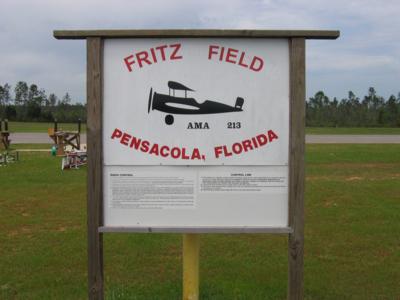 Beulah LandfillThe 101-acre Beulah Landfill Superfund site is in Pensacola, Florida. The site served as a waste disposal area from 1966 until 1984. A state investigation in 1987 found that site activities contaminated soil and groundwater. In 1990, EPA added this site to the Superfund program’s National Priorities List (NPL). The site’s responsible party performed the required cleanup activities. Cleanup included completing a landfill closure according to the Florida Department of Environmental Protection (FDEP) landfill closure program. Cleanup also included groundwater monitoring and removal of contaminated soil from the southern part of the landfill. New land use controls limit future site development. In 1998, EPA removed the site from the NPL. Groundwater monitoring is ongoing. A number of stakeholders discussed potential uses for the site. As a result, the Northwest Florida Modelers, Inc. came to an agreement with Escambia County to use the site for aero modeling. Today, the northern part of Beulah Landfill, now known as Fritz Field, is a successful model airplane park. Organizations cannot use money generated from the use of the site for individual profit, but rather, must invest in site improvements to ensure continued maintenance of the site. By working together EPA, FDEP and Escambia County converted a formerly unused and unavailable property into a community asset that provides open-space recreational opportunities to the community.
Beulah LandfillThe 101-acre Beulah Landfill Superfund site is in Pensacola, Florida. The site served as a waste disposal area from 1966 until 1984. A state investigation in 1987 found that site activities contaminated soil and groundwater. In 1990, EPA added this site to the Superfund program’s National Priorities List (NPL). The site’s responsible party performed the required cleanup activities. Cleanup included completing a landfill closure according to the Florida Department of Environmental Protection (FDEP) landfill closure program. Cleanup also included groundwater monitoring and removal of contaminated soil from the southern part of the landfill. New land use controls limit future site development. In 1998, EPA removed the site from the NPL. Groundwater monitoring is ongoing. A number of stakeholders discussed potential uses for the site. As a result, the Northwest Florida Modelers, Inc. came to an agreement with Escambia County to use the site for aero modeling. Today, the northern part of Beulah Landfill, now known as Fritz Field, is a successful model airplane park. Organizations cannot use money generated from the use of the site for individual profit, but rather, must invest in site improvements to ensure continued maintenance of the site. By working together EPA, FDEP and Escambia County converted a formerly unused and unavailable property into a community asset that provides open-space recreational opportunities to the community.
For more information:
BMI-Textron
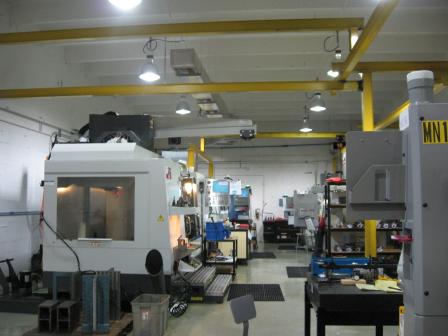 BMI-TextronThe 3.4-acre Basic Microelectronics, Inc. (BMI)-Textron Superfund site is located in Lake Park, Florida. BMI began manufacturing operations in the Tri-City Industrial Park in 1969. Textron Inc. purchased BMI in 1981. BMI-Textron made chromium-backed glass plates used in electronic parts. Site operators disposed of liquid process waste containing cyanide in on-site ponds and drain fields. In 1984, a state investigation found that site activities had contaminated soil and groundwater. The business closed in early 1986. The site’s potentially responsible party, BMI-Textron, cleaned up contaminated soil in 1984 and 1990. EPA placed the site on the Superfund program’s National Priorities List (NPL) in 1990. Cleanup activities also included groundwater monitoring and site access restrictions. Following the completion of cleanup activities, EPA removed the site from the NPL in November 2002. Commercial and light industrial use at the site continued during cleanup. Today, Florida Aero Precision operates an aerospace parts manufacturing facility in the former BMI-Textron building. The company specializes in the manufacture of turbine engine parts for industrial gas turbines and flight turbines. Numerous other commercial businesses operate on the site. A sign manufacturer, furniture manufacturer, electrical, masonry and cabinetry contractors, a cleaning company and a flooring company all use the site.
BMI-TextronThe 3.4-acre Basic Microelectronics, Inc. (BMI)-Textron Superfund site is located in Lake Park, Florida. BMI began manufacturing operations in the Tri-City Industrial Park in 1969. Textron Inc. purchased BMI in 1981. BMI-Textron made chromium-backed glass plates used in electronic parts. Site operators disposed of liquid process waste containing cyanide in on-site ponds and drain fields. In 1984, a state investigation found that site activities had contaminated soil and groundwater. The business closed in early 1986. The site’s potentially responsible party, BMI-Textron, cleaned up contaminated soil in 1984 and 1990. EPA placed the site on the Superfund program’s National Priorities List (NPL) in 1990. Cleanup activities also included groundwater monitoring and site access restrictions. Following the completion of cleanup activities, EPA removed the site from the NPL in November 2002. Commercial and light industrial use at the site continued during cleanup. Today, Florida Aero Precision operates an aerospace parts manufacturing facility in the former BMI-Textron building. The company specializes in the manufacture of turbine engine parts for industrial gas turbines and flight turbines. Numerous other commercial businesses operate on the site. A sign manufacturer, furniture manufacturer, electrical, masonry and cabinetry contractors, a cleaning company and a flooring company all use the site.
For more information:
- Redevelopment of the BMI-Textron and Trans Circuits, Inc. Superfund Sites (PDF)(1 pg, 511 K, About PDF)
- Superfund Site Profile Page
Brown's Dump
Brown’s Dump Superfund site occupies about 250 acres in Jacksonville, Florida. The City of Jacksonville used the site as a landfill for incinerator ash from the 1940s until 1953. When the landfill closed, the Duval County School Board acquired the site. The school board built an elementary school over the former landfill. The site also includes a Jacksonville Electric Authority (JEA) electrical substation and residences. Sampling of area soil revealed the presence of lead and other contaminants from incinerator ash in the landfill. An EPA Expanded Site Inspection in 1998 determined that cleanup actions would be required. EPA did not list the site on the National Priorities List (NPL) but considers it an NPL-caliber site and is addressing it through the Superfund Alternative Approach. The City of Jacksonville agreed to conduct cleanup activities. The cleanup plan, developed in 2006, required removal of contaminated soils and replacement with clean soil. In total, cleanup addressed half of an on-site school property and about 216 residential properties, allowing residents to continue living safely in their homes. Groundwater monitoring continues. Currently, single family homes and multi-unit apartments occupy areas around the original landfill. JEA also continues to operate an electrical substation on 2 acres of the site.
For more information:
Cabot/Koppers
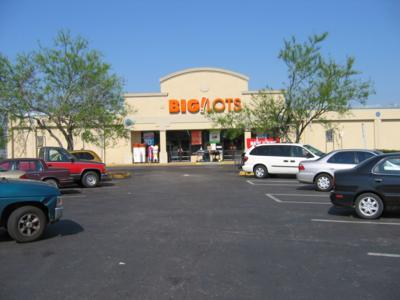 Cabot/KoppersThe 140-acre Cabot/Koppers Superfund site is located in Gainesville, Florida. Since the early 1900s, two companies, Cabot Carbon Corporation and Koppers Co., Inc., operated pine tar, charcoal and wood-preserving facilities at the site. Facility operations and waste handling practices contaminated groundwater, soil, sediment and surface water. In 1984, EPA added the site to the Superfund program’s National Priorities List (NPL). The parties responsible for site contamination performed the site cleanup. Cleanup activities included removal and treatment of contaminated soil, groundwater treatment and removal of contaminated soil from residential properties. Collaboration among EPA, state and local government, responsible parties and local developers led to the successful cleanup and beneficial reuse of the site. Today, the Cabot Carbon part of the site is home to a shopping center, retail stores, commercial office space and multiple car dealerships.
Cabot/KoppersThe 140-acre Cabot/Koppers Superfund site is located in Gainesville, Florida. Since the early 1900s, two companies, Cabot Carbon Corporation and Koppers Co., Inc., operated pine tar, charcoal and wood-preserving facilities at the site. Facility operations and waste handling practices contaminated groundwater, soil, sediment and surface water. In 1984, EPA added the site to the Superfund program’s National Priorities List (NPL). The parties responsible for site contamination performed the site cleanup. Cleanup activities included removal and treatment of contaminated soil, groundwater treatment and removal of contaminated soil from residential properties. Collaboration among EPA, state and local government, responsible parties and local developers led to the successful cleanup and beneficial reuse of the site. Today, the Cabot Carbon part of the site is home to a shopping center, retail stores, commercial office space and multiple car dealerships.
For more information:
- Cabot Carbon/Koppers, Gainesville, FL - Reuse Assessment (PDF) (4 pp, 2.9 MB, About PDF)
- Superfund Site Profile Page
Cascade Park Gasification Plant
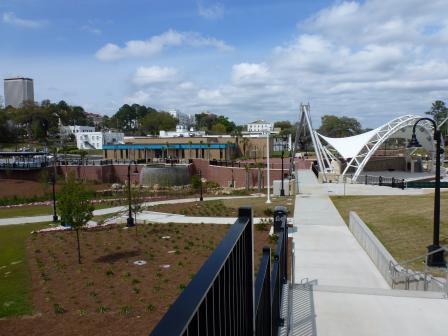 Cascade Park Gasification PlantThe 10-acre Cascade Park Gasification Plant site is located in the City of Tallahassee, Florida. From 1895 until the mid-1950s, the City operated a manufactured gas plant (MGP) on the site. The plant turned coal reserves into gas to provide light and heat for city residents. A city-owned landfill, also located on the property, opened in the 1920s. The landfill accepted waste from the MGP. In 1987, EPA determined that site activities and waste management practices contaminated groundwater, soil and sediment. The City of Tallahassee worked with EPA and the Florida Department of Environmental Protection to clean up the site. Cleanup activities included removing contaminated soil and capping the landfill. EPA and the site’s responsible parties are working together to address remaining groundwater contamination. The City of Tallahassee and Blueprint 2000, a local, taxpayer-funded intergovernmental agency, developed a community-wide redevelopment plan. Their goal was to preserve the City’s natural resources and to celebrate the Cascade Park site’s cultural heritage. The plan integrates recreational trails, community gathering places, public parks and storm water management facilities over 26 acres of downtown Tallahassee. In 2008, EPA awarded the site Region 4's "Excellence in Site Reuse" award. The award is an honor given to those who go above and beyond in their Superfund site redevelopment efforts. In April 2010, the City began constructing the new recreational park system at the former MGP property. Cascade Park officially opened with a kickoff ceremony in March 2014. Over a thousand people attended. Key features of the park include trails, playgrounds, a 16-foot waterfall, interactive fountains, a war memorial, and a state-of-the-art amphitheater for concerts and community events.
Cascade Park Gasification PlantThe 10-acre Cascade Park Gasification Plant site is located in the City of Tallahassee, Florida. From 1895 until the mid-1950s, the City operated a manufactured gas plant (MGP) on the site. The plant turned coal reserves into gas to provide light and heat for city residents. A city-owned landfill, also located on the property, opened in the 1920s. The landfill accepted waste from the MGP. In 1987, EPA determined that site activities and waste management practices contaminated groundwater, soil and sediment. The City of Tallahassee worked with EPA and the Florida Department of Environmental Protection to clean up the site. Cleanup activities included removing contaminated soil and capping the landfill. EPA and the site’s responsible parties are working together to address remaining groundwater contamination. The City of Tallahassee and Blueprint 2000, a local, taxpayer-funded intergovernmental agency, developed a community-wide redevelopment plan. Their goal was to preserve the City’s natural resources and to celebrate the Cascade Park site’s cultural heritage. The plan integrates recreational trails, community gathering places, public parks and storm water management facilities over 26 acres of downtown Tallahassee. In 2008, EPA awarded the site Region 4's "Excellence in Site Reuse" award. The award is an honor given to those who go above and beyond in their Superfund site redevelopment efforts. In April 2010, the City began constructing the new recreational park system at the former MGP property. Cascade Park officially opened with a kickoff ceremony in March 2014. Over a thousand people attended. Key features of the park include trails, playgrounds, a 16-foot waterfall, interactive fountains, a war memorial, and a state-of-the-art amphitheater for concerts and community events.
For more information:
Chemform, Inc.
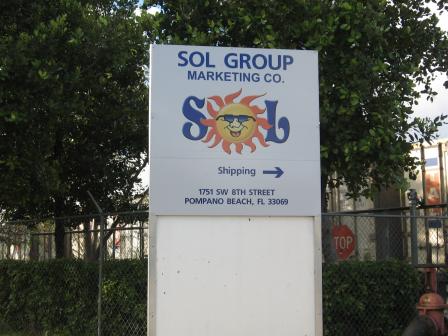 Chemform, Inc.The 4-acre Chemform, Inc. Superfund site is located in Pompano Beach, Florida. Between 1967 and 1985, a precision machine shop manufactured metal parts for the aerospace industry at the site. The company also designed and manufactured electrochemical machines for other industries. Site operators discharged process wastewater into an open trench and into a septic system and associated leach field near the manufacturing building. A 1985 assessment found that site activities and waste disposal practices contaminated soil and groundwater. In 1989, EPA listed the site on the Superfund program’s National Priorities List (NPL). Cleanup activities at the site included removing and properly disposing of contaminated soil, and removing on-site drums, debris and tank contents. Workers also installed a groundwater monitoring system. EPA removed the site from the NPL in 2000. In 2010, The Sol Group opened a wholesale produce distribution center at the site. Today, the redeveloped site provides employment opportunities to the local community.
Chemform, Inc.The 4-acre Chemform, Inc. Superfund site is located in Pompano Beach, Florida. Between 1967 and 1985, a precision machine shop manufactured metal parts for the aerospace industry at the site. The company also designed and manufactured electrochemical machines for other industries. Site operators discharged process wastewater into an open trench and into a septic system and associated leach field near the manufacturing building. A 1985 assessment found that site activities and waste disposal practices contaminated soil and groundwater. In 1989, EPA listed the site on the Superfund program’s National Priorities List (NPL). Cleanup activities at the site included removing and properly disposing of contaminated soil, and removing on-site drums, debris and tank contents. Workers also installed a groundwater monitoring system. EPA removed the site from the NPL in 2000. In 2010, The Sol Group opened a wholesale produce distribution center at the site. Today, the redeveloped site provides employment opportunities to the local community.
For more information:
City Industries, Inc.
The 1-acre City Industries, Inc. Superfund site is located in Orlando, Florida. From the early 1970s until 1983, site owners operated a hazardous waste management facility at the site. Improper disposal practices led to on-site soil and groundwater contamination. In 1983, after a state order to cease operations, City Chemical Company abandoned the site. They left barrels of hazardous waste and thousands of gallons of sludge in a number of large on-site holding tanks. In 1989, EPA added the site to the Superfund program’s National Priorities List (NPL). The Florida Department of Environmental Protection, EPA and responsible parties performed cleanup activities at the site between 1983 and 1994. Cleanup included the removal of drums and sludge, treatment of contaminated soil and the installation of a groundwater pump and treatment system. Groundwater treatment and monitoring are ongoing. Since 1983, facility uses include small commercial and retail business operations.
For more information:
Davie Landfill
The Davie Landfill Superfund site, located in Broward County, Florida, began operation in 1964 and continued until 1987. The landfill accepted construction debris, tires and municipal wastes. Additionally, a basin at the site received grease trap material, septic tank sludge and treated municipal sludge. Waste disposal activities led to the contamination of the site’s soils, sediments and ground water. EPA listed the site on the National Priorities List in 1983. With EPA’s oversight, Broward County remediated the cyanide and sulfide contaminated basin sediments, stabilizing the material in a disposal cell and capping the cell with a protective covering. Monitored natural attenuation addresses the vinyl chloride and antimony contamination in the site’s ground water and the most recent data verifies the achievement of cleanup standards and the success of the chosen remedy. In 2006, EPA deleted the site from the National Priorities List (NPL). In addition to protecting the health and safety of the public and the environment, the site’s cleanup also resulted in the creation of a new community resource for Broward County. The site’s remedy allows for a variety of recreational uses while a 50-acre portion of the site remains designated as a restricted use area that includes a buried municipal waste cell and a gas collection system. Approximately 160 acres of the 210-acre site now serve as home to the Vista View Park. Activities in the park include horseback riding along many trails, biking, a trail with fitness stations, rollerblading, paragliding, primitive camping, radio-controlled plane flying and boating, catch and release fishing, and many other types of passive use. There are also two playgrounds at the park, one of which received certification from Boundless Playgrounds for exceeding the minimum requirements of the Americans with Disabilities Act. The efforts by various stakeholders including regulatory agencies, public officials, local residents and public interest groups spurred the development of the park. Vista View Park, which opened in July 2003, helped fulfill the growing demand in the area for parkland and recreational facilities, as the County is now the second most populous county in Florida. In late June 2010, EPA awarded Broward County, Florida the EPA Region 4 “Excellence in Site Reuse” award for redeveloping the former Davie Landfill Superfund site into the Vista View Park.
- Reuse and the Benefit to Community: Davie Landfill Case Study (2014) (PDF) (57 pp, 1.2 MB, About PDF)
- News Release: EPA Recognizes Broward County, Fl., for Transforming Former Landfill into a Park
- Superfund Site Profile Page
Florida Petroleum Reprocessors
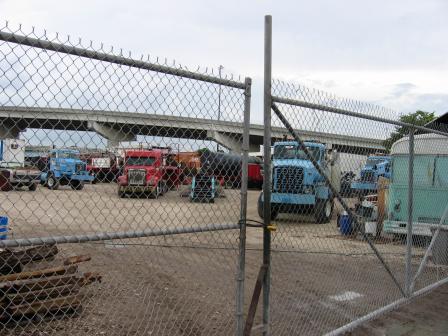 Florida Petroleum ReprocessorsThe Florida Petroleum Reprocessors (FPR) Superfund site is located in Davie, Florida. The site consists of the 1-acre facility property and a groundwater plume that covered about 870 acres. From 1979 to 1992, several companies operated at the FPR facility. Some recycled used motor oil and fuel. In 1996, EPA and the Florida Department of Environmental Protection identified contamination at a nearby municipal water well field. The agencies traced the contamination back to the FPR facility. In response, EPA added the site to the Superfund program’s National Priorities List (NPL). In 2001, cleanup at the facility removed contaminated source materials. In 2004, EPA decided to postpone long-term groundwater treatment to gather additional data. Natural processes that breakdown contaminants address the contaminated groundwater plume. While cleanup was underway, a vehicle and equipment storage facility operated on the southern portion of the site. In addition, several highway billboards are located on site.
Florida Petroleum ReprocessorsThe Florida Petroleum Reprocessors (FPR) Superfund site is located in Davie, Florida. The site consists of the 1-acre facility property and a groundwater plume that covered about 870 acres. From 1979 to 1992, several companies operated at the FPR facility. Some recycled used motor oil and fuel. In 1996, EPA and the Florida Department of Environmental Protection identified contamination at a nearby municipal water well field. The agencies traced the contamination back to the FPR facility. In response, EPA added the site to the Superfund program’s National Priorities List (NPL). In 2001, cleanup at the facility removed contaminated source materials. In 2004, EPA decided to postpone long-term groundwater treatment to gather additional data. Natural processes that breakdown contaminants address the contaminated groundwater plume. While cleanup was underway, a vehicle and equipment storage facility operated on the southern portion of the site. In addition, several highway billboards are located on site.
For more information:
Former Spellman Engineering
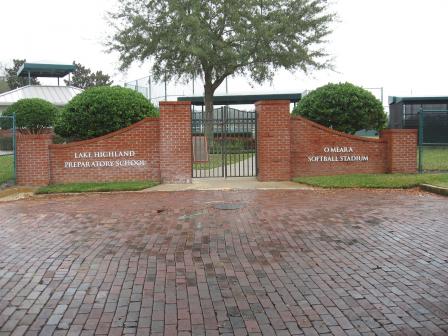 Former Spellman EngineeringThe Former Spellman Engineering site is located near downtown Orlando, Florida. Spellman Engineering, a former parts cleaning facility, operated at the site from 1963 to 1969. In 1992, EPA detected a groundwater contaminant plume extending off the property. The plume contained chemicals associated with the parts cleaning business. The City of Orlando and Orlando Utility Commission (OUC) acquired much of the property prior to the discovery of the plume. Under a lease agreement with an option to purchase, the Lake Highland Preparatory School (LHPS) developed a portion of the land into a sports and recreational complex. The property’s significant value presented the City and OUC with the opportunity to use proceeds from its sale to help fund the site’s cleanup. This prevented the site’s listing on the Superfund program’s National Priorities List (NPL). The burial of the site’s groundwater cleanup system allowed for remediation, while at the same time optimized the area for reuse. The project provided positive outcomes for all parties involved. For the City and OUC, the site’s cleanup protects public health, while the adjacent property’s redevelopment will provide new land uses to address community needs. For the surrounding neighborhoods, the site’s cleanup addresses local health and safety concerns, removes a community "eyesore," and results in the Lake Highland property’s redevelopment in a manner consistent with community goals and priorities. For LHPS, the site’s cleanup provides an adjacent land area for both new and expanded school facilities. Today, the school’s O’Meara Family Sports Center includes a new ball field, practice fields and parking, with future expansion plans calling for a gymnasium and maintenance facilities. The Dinky Line segment of the Orlando Urban Trail, a paved recreational trail, now extends through the area. The City and OUC are also exploring opportunities for mixed-use redevelopment near Central Florida’s new SunRail commuter rail line and other planned public transit facilities.
Former Spellman EngineeringThe Former Spellman Engineering site is located near downtown Orlando, Florida. Spellman Engineering, a former parts cleaning facility, operated at the site from 1963 to 1969. In 1992, EPA detected a groundwater contaminant plume extending off the property. The plume contained chemicals associated with the parts cleaning business. The City of Orlando and Orlando Utility Commission (OUC) acquired much of the property prior to the discovery of the plume. Under a lease agreement with an option to purchase, the Lake Highland Preparatory School (LHPS) developed a portion of the land into a sports and recreational complex. The property’s significant value presented the City and OUC with the opportunity to use proceeds from its sale to help fund the site’s cleanup. This prevented the site’s listing on the Superfund program’s National Priorities List (NPL). The burial of the site’s groundwater cleanup system allowed for remediation, while at the same time optimized the area for reuse. The project provided positive outcomes for all parties involved. For the City and OUC, the site’s cleanup protects public health, while the adjacent property’s redevelopment will provide new land uses to address community needs. For the surrounding neighborhoods, the site’s cleanup addresses local health and safety concerns, removes a community "eyesore," and results in the Lake Highland property’s redevelopment in a manner consistent with community goals and priorities. For LHPS, the site’s cleanup provides an adjacent land area for both new and expanded school facilities. Today, the school’s O’Meara Family Sports Center includes a new ball field, practice fields and parking, with future expansion plans calling for a gymnasium and maintenance facilities. The Dinky Line segment of the Orlando Urban Trail, a paved recreational trail, now extends through the area. The City and OUC are also exploring opportunities for mixed-use redevelopment near Central Florida’s new SunRail commuter rail line and other planned public transit facilities.
For more information:
- Redevelopment of the Former Spellman Engineering Site (PDF)(1 pg, 221 K, About PDF)
- Engaging Early in the Superfund Process, Enabling Cleanup and Reuse: The Former Spellman Engineering Site in Orlando, Florida (PDF) (14 pp, 1.9 MB)
- Superfund Site Profile Page
Harris Corp. (Palm Bay Plant)
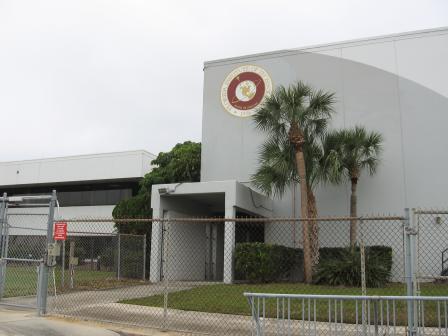 Harris Corp. (Palm Bay Plant)The 310-acre Harris Corp. (Palm Bay Plant) Superfund site is located in Palm Bay, Florida. The site was home to an electronics firm from the 1950s until Harris Corporation purchased the firm in 1967. Intersil Corporation bought the operations from Harris Corporation. Both companies currently continue to manufacture equipment on the site. In the early 1980s, EPA discovered groundwater contamination under the facility and in a nearby well field. As a result, EPA listed the site on the Superfund program’s National Priorities List (NPL) in 1987. The site’s potentially responsible party (PRP) extracted and treated contaminated groundwater. In 2002, groundwater treatment ended. Groundwater monitoring is ongoing. In 2010, Intersil Corporation donated a $13 million state-of-the-art fabrication facility and a 5-acre property to the University of Central Florida as a research center. The University retained the option to accept the donated facility until the summer of 2013, but decided against using the buildings. Intersil Corporation worked with EPA and the Florida Institute of Technology (FIT) to finalize FIT’s purchase of the facility and land. FIT plans to use the area as an extended campus for students. Intersil Corporation also leases portions of its property to other companies. In February 2015, Harris Corporation opened a new 464,000 square-foot, $130 million technology center. The Center houses more than 1,400 engineers and staff. The Center’s construction created nearly 300 jobs for workers in the area.
Harris Corp. (Palm Bay Plant)The 310-acre Harris Corp. (Palm Bay Plant) Superfund site is located in Palm Bay, Florida. The site was home to an electronics firm from the 1950s until Harris Corporation purchased the firm in 1967. Intersil Corporation bought the operations from Harris Corporation. Both companies currently continue to manufacture equipment on the site. In the early 1980s, EPA discovered groundwater contamination under the facility and in a nearby well field. As a result, EPA listed the site on the Superfund program’s National Priorities List (NPL) in 1987. The site’s potentially responsible party (PRP) extracted and treated contaminated groundwater. In 2002, groundwater treatment ended. Groundwater monitoring is ongoing. In 2010, Intersil Corporation donated a $13 million state-of-the-art fabrication facility and a 5-acre property to the University of Central Florida as a research center. The University retained the option to accept the donated facility until the summer of 2013, but decided against using the buildings. Intersil Corporation worked with EPA and the Florida Institute of Technology (FIT) to finalize FIT’s purchase of the facility and land. FIT plans to use the area as an extended campus for students. Intersil Corporation also leases portions of its property to other companies. In February 2015, Harris Corporation opened a new 464,000 square-foot, $130 million technology center. The Center houses more than 1,400 engineers and staff. The Center’s construction created nearly 300 jobs for workers in the area.
For more information:
- Harris Corp. (Palm Bay Plant) Ready for Reuse Determination (2009) (PDF) (20 pp, 3.0 MBK, About PDF)
- Superfund Site Profile Page
Helena Chemical Co. (Tampa Plant)
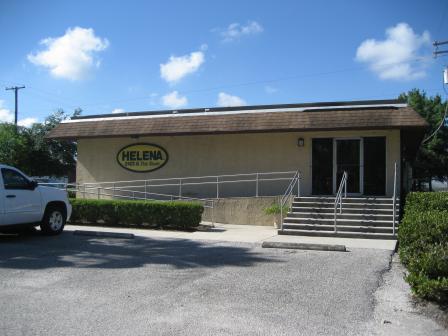 Helena Chemical Co. (Tampa Plant)The 8-acre Helena Chemical Co. (Tampa Plant) Superfund site is located in Tampa, Florida. Originally owned by the Flag Sulfur Company, the facility manufactured chemical agricultural products from 1929 to 1967. Helena Chemical Company purchased the company and continued to process and handle chemical agricultural products. EPA investigated the site from 1988 to 1990. Studies found contamination in the soil and groundwater. In 1992, EPA added the site to the Superfund program’s National Priorities List (NPL). The cleanup involved removing chemical storage tanks and treating soils. Groundwater also needed to be cleaned to drinking water levels. Cleanup began in 2000 and is ongoing. The Helena Chemical Company remains on site. The company uses the facility as a distribution center.
Helena Chemical Co. (Tampa Plant)The 8-acre Helena Chemical Co. (Tampa Plant) Superfund site is located in Tampa, Florida. Originally owned by the Flag Sulfur Company, the facility manufactured chemical agricultural products from 1929 to 1967. Helena Chemical Company purchased the company and continued to process and handle chemical agricultural products. EPA investigated the site from 1988 to 1990. Studies found contamination in the soil and groundwater. In 1992, EPA added the site to the Superfund program’s National Priorities List (NPL). The cleanup involved removing chemical storage tanks and treating soils. Groundwater also needed to be cleaned to drinking water levels. Cleanup began in 2000 and is ongoing. The Helena Chemical Company remains on site. The company uses the facility as a distribution center.
For more information:
Hollingsworth Solderless Terminal
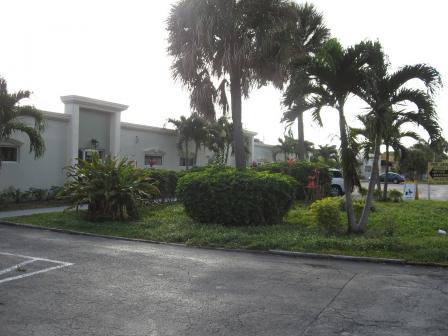 Hollingsworth Solderless TerminalThe 3.5-acre Hollingsworth Solderless Terminal Superfund site is located in Fort Lauderdale, Florida. From 1968 until 1982, Hollingsworth Solderless Terminal Company conducted electrical manufacturing on site. The company disposed of wastewater into on-site fields. In 1980, the Broward County Environmental Quality Control Board found that site activities contaminated groundwater. EPA placed the site on the Superfund program’s National Priorities List (NPL) in 1983. Cleanup activities in 1986 included abandoning old drain fields, treating soil and groundwater, and injecting treated groundwater back into the ground. In 2002, EPA removed and properly disposed of additional contaminated soil. EPA later amended the remedy and began using bioremediation to address remaining contamination. Today, groundwater contaminant levels are low and groundwater monitoring is ongoing. EPA designed the site’s cleanup to enable the continued operation of on-site businesses throughout cleanup activities. Several small businesses currently operate out of two buildings on site.
Hollingsworth Solderless TerminalThe 3.5-acre Hollingsworth Solderless Terminal Superfund site is located in Fort Lauderdale, Florida. From 1968 until 1982, Hollingsworth Solderless Terminal Company conducted electrical manufacturing on site. The company disposed of wastewater into on-site fields. In 1980, the Broward County Environmental Quality Control Board found that site activities contaminated groundwater. EPA placed the site on the Superfund program’s National Priorities List (NPL) in 1983. Cleanup activities in 1986 included abandoning old drain fields, treating soil and groundwater, and injecting treated groundwater back into the ground. In 2002, EPA removed and properly disposed of additional contaminated soil. EPA later amended the remedy and began using bioremediation to address remaining contamination. Today, groundwater contaminant levels are low and groundwater monitoring is ongoing. EPA designed the site’s cleanup to enable the continued operation of on-site businesses throughout cleanup activities. Several small businesses currently operate out of two buildings on site.
For more information:
Jacksonville Ash Site
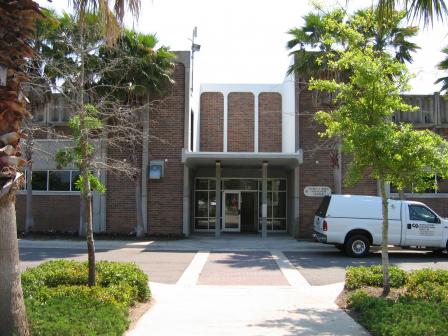 Jacksonville Ash SiteThe Jacksonville Ash Site Superfund site is in Jacksonville, Florida. The site includes three areas where the City of Jacksonville's municipal incinerators created and deposited ash. The Forest Street Incinerator covers about 370 acres, the 5th & Cleveland Incinerator covers about 400 acres, and the Lonnie C. Miller, Sr. Park covers about 250 acres. These areas are in mainly residential areas of Jacksonville. The Forest Street Incinerator and the 5th & Cleveland Incinerator operated as the City of Jacksonville’s municipal solid waste incinerators from the 1910s until the 1960s. Site operators disposed of combustion ash, clinker and ash residues on each of the incinerator properties, as well as on the land later redeveloped into the Lonnie C. Miller, Sr. Park. EPA did not list the site on the Superfund program’s National Priorities List (NPL). EPA is addressing the site through the Superfund Alternative Approach, which uses the same investigation and cleanup process and standards used for sites listed on the NPL. The City of Jacksonville found multiple contaminants in soil on the sites. EPA’s 2006 cleanup plan involved the removal of contaminated soil and/or placement of clean soil in residential and non-residential areas. Current on-site land uses include residential, commercial, recreational and public services. All three sections of the site remained in continued use through site cleanup activities. Contamination at the Lonnie C. Miller, Sr. Park portion of the site has been cleaned up and the previously contaminated part of the park has been fenced off. The cleanup enabled the continued operation of the park. Today, the park offers recreational amenities including playground equipment, picnic pavilions, a restroom building, a sand volleyball court, paved walking paths and parking areas. The 5th Street and Cleveland Incinerator portion is home to the Emmet C. Reed Community Center building, a pool and recreational facilities, including a basketball court, playground equipment, tennis courts and paved parking areas. A part of the area has also been redeveloped into the MaliVai Washington Tennis Center. The Forest Street Incinerator portion includes a park building and playground equipment, a baseball field, paved parking, playground areas and a new animal care facility. Cleanup at the site is ongoing.
Jacksonville Ash SiteThe Jacksonville Ash Site Superfund site is in Jacksonville, Florida. The site includes three areas where the City of Jacksonville's municipal incinerators created and deposited ash. The Forest Street Incinerator covers about 370 acres, the 5th & Cleveland Incinerator covers about 400 acres, and the Lonnie C. Miller, Sr. Park covers about 250 acres. These areas are in mainly residential areas of Jacksonville. The Forest Street Incinerator and the 5th & Cleveland Incinerator operated as the City of Jacksonville’s municipal solid waste incinerators from the 1910s until the 1960s. Site operators disposed of combustion ash, clinker and ash residues on each of the incinerator properties, as well as on the land later redeveloped into the Lonnie C. Miller, Sr. Park. EPA did not list the site on the Superfund program’s National Priorities List (NPL). EPA is addressing the site through the Superfund Alternative Approach, which uses the same investigation and cleanup process and standards used for sites listed on the NPL. The City of Jacksonville found multiple contaminants in soil on the sites. EPA’s 2006 cleanup plan involved the removal of contaminated soil and/or placement of clean soil in residential and non-residential areas. Current on-site land uses include residential, commercial, recreational and public services. All three sections of the site remained in continued use through site cleanup activities. Contamination at the Lonnie C. Miller, Sr. Park portion of the site has been cleaned up and the previously contaminated part of the park has been fenced off. The cleanup enabled the continued operation of the park. Today, the park offers recreational amenities including playground equipment, picnic pavilions, a restroom building, a sand volleyball court, paved walking paths and parking areas. The 5th Street and Cleveland Incinerator portion is home to the Emmet C. Reed Community Center building, a pool and recreational facilities, including a basketball court, playground equipment, tennis courts and paved parking areas. A part of the area has also been redeveloped into the MaliVai Washington Tennis Center. The Forest Street Incinerator portion includes a park building and playground equipment, a baseball field, paved parking, playground areas and a new animal care facility. Cleanup at the site is ongoing.
For more information:
Landia Chemical Company
The 13-acre Landia Chemical Company Superfund site is located in Lakeland, Florida. The site spans two property parcels: the former Landia Chemical Company (LCC) property and the former Florida Favorite Fertilizer (FFF) Company. FFF began fertilizer blending operations around 1935. Between 1945 and 1987, three companies conducted industrial pesticide operations on the former LCC property. Over time, facility waste management and disposal activities released contaminants into the environment. EPA placed the site on the Superfund program’s National Priorities List (NPL) in 2000. With oversight provided by EPA and the Florida Department of Environmental Protection, the responsible parties cleaned up the site. Cleanup included removal and disposal of contaminated soil, and land and groundwater use restrictions. Groundwater treatment is ongoing. Responsible parties replanted trees and plants at the site. Over 30 varieties of plants, including red maples, slash pines and poplar trees, now grow on site. These areas are in ecological reuse. They provide habitats for native wildlife, migratory birds and pollinators. The trees also help groundwater cleanup through uptake and phytoremediation. The FFF facility is currently owned by Sylvite Southeast Ltd, a wholesale fertilizer merchant. The company continues to operate as a fertilizer blending facility on site. In 2013, EPA chose the site for an “Excellence in Site Reuse” award to recognize ecological revitalization and reuse activities at the site.
For more information:
- Redevelopment of the Landia Chemical Company Superfund Site (PDF)(1 pg, 210 K, About PDF)
- Superfund Site Profile Page
Madison County Sanitary Landfill
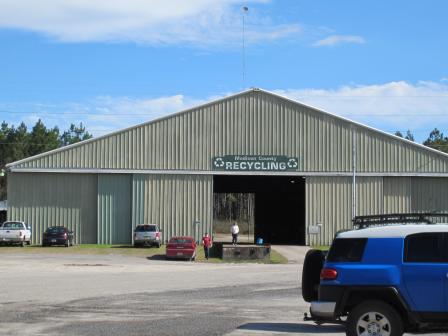 Madison County Sanitary LandfillThe 90-acre Madison County Sanitary Landfill Superfund site is located outside of Madison, Florida. From 1970 to 1980, the landfill accepted waste, including industrial chemical cleaning products from the ITT Corporation. Sampling results in the mid-1980s found contamination in the groundwater. The Florida Department of Environmental Protection (FDEP) immediately installed water purification systems for residents living near the landfill. EPA added the site to the Superfund program’s National Priorities List (NPL) in 1988. The City of Madison, Madison County and the ITT Corporation agreed to pay for and conduct the cleanup. Cleanup included installing a soil cover and water treatment system. Additional cleanup efforts included regulating land use and monitoring groundwater. Madison County currently uses the site for various municipal purposes. A recycling facility, storage for the Madison County Department of Transportation, an aircraft hangar and a landing strip are now located on site.
Madison County Sanitary LandfillThe 90-acre Madison County Sanitary Landfill Superfund site is located outside of Madison, Florida. From 1970 to 1980, the landfill accepted waste, including industrial chemical cleaning products from the ITT Corporation. Sampling results in the mid-1980s found contamination in the groundwater. The Florida Department of Environmental Protection (FDEP) immediately installed water purification systems for residents living near the landfill. EPA added the site to the Superfund program’s National Priorities List (NPL) in 1988. The City of Madison, Madison County and the ITT Corporation agreed to pay for and conduct the cleanup. Cleanup included installing a soil cover and water treatment system. Additional cleanup efforts included regulating land use and monitoring groundwater. Madison County currently uses the site for various municipal purposes. A recycling facility, storage for the Madison County Department of Transportation, an aircraft hangar and a landing strip are now located on site.
For more information:
Miami Drum Services
The William Lehman Operations and Maintenance Center in Miami, Florida, was built on the former Miami Drum Services Superfund site and supports Dade County's public electric rail system. A drum recycling facility operated at this site in southern Florida from 1966 to 1981. Due to years of improper waste management activities, corrosives, solvents and toxic metals once used to clean the hazardous waste and chemical storage drums contaminated area soil and ground water used for drinking. Once Miami Drum Services ceased operations, Dade County acquired the property for use as a maintenance facility and repair yard for its public rail lines. Following site investigations and the discovery of hazardous waste contamination EPA added the site to the National Priorities List (NPL) in 1983. Dade County teamed with EPA to develop a strategy to remove 15,000 tons of contaminated soil and treat over 650,000 gallons of contaminated ground water. Thanks to the successful cleanup, Dade County was able to resume construction of the 82-acre train repair facility that is now in operation. Today, the facility ensures the safety, quality and timeliness of Dade County's commuter trains that serve 50,000 people a day.
For more information:
Munisport Landfill
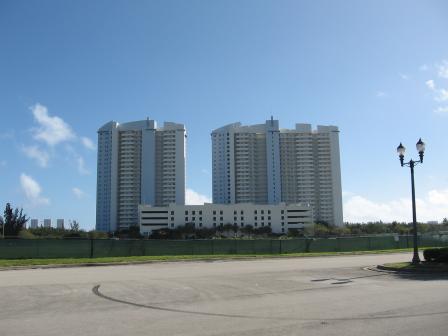 Munisport LandfillThe Munisport Landfill Superfund site is located in North Miami, Florida. A wetland mangrove preserve connected to Biscayne Bay borders the site. The 170-acre former landfill is part of a larger parcel of land originally planned to be part of a trade and cultural center. The center’s developers received solid waste in the 1970s for use as fill material during construction. The developers disposed of 6 million cubic yards of solid waste in an unlined landfill. These disposal practices contaminated area groundwater and surface water. As a result, EPA listed the site on the Superfund program’s National Priorities List (NPL) in 1983. Site investigations in the late 1980s showed that the landfill no longer threatened human health, but additional cleanup was necessary in the mangrove wetlands. Workers installed a barrier to collect and treat groundwater and to prevent contaminants from spreading. Additional tidal wetland restoration activities followed. After completing cleanup activities, EPA removed the site from the NPL in 1999. Beginning in 2002, developers began to work toward creating a billion-dollar master-planned community on the site, known as Biscayne Landing. Although construction on the mixed-use development stalled in 2007 due to a worsened economy, plans include residences and a shopping mall. Today, two 25-story towers of luxury condominiums are complete.
Munisport LandfillThe Munisport Landfill Superfund site is located in North Miami, Florida. A wetland mangrove preserve connected to Biscayne Bay borders the site. The 170-acre former landfill is part of a larger parcel of land originally planned to be part of a trade and cultural center. The center’s developers received solid waste in the 1970s for use as fill material during construction. The developers disposed of 6 million cubic yards of solid waste in an unlined landfill. These disposal practices contaminated area groundwater and surface water. As a result, EPA listed the site on the Superfund program’s National Priorities List (NPL) in 1983. Site investigations in the late 1980s showed that the landfill no longer threatened human health, but additional cleanup was necessary in the mangrove wetlands. Workers installed a barrier to collect and treat groundwater and to prevent contaminants from spreading. Additional tidal wetland restoration activities followed. After completing cleanup activities, EPA removed the site from the NPL in 1999. Beginning in 2002, developers began to work toward creating a billion-dollar master-planned community on the site, known as Biscayne Landing. Although construction on the mixed-use development stalled in 2007 due to a worsened economy, plans include residences and a shopping mall. Today, two 25-story towers of luxury condominiums are complete.
For more information:
Normandy Park Apartments
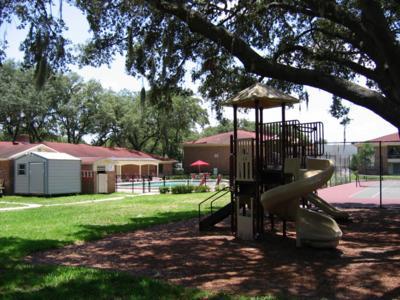 Normandy Park ApartmentsThe 9-acre Normandy Park Apartments Superfund site is located in Temple Terrace, Florida, near the City of Tampa. From 1953 to 1963, Gulf Coast Recycling, Inc. operated a battery recycling and secondary lead smelting facility on the site. Facility operations resulted in the release of sulfuric acid and lead into the environment. The company built a 144-unit apartment complex on the property in 1970. EPA’s sampling in the early 1990s confirmed widespread lead contamination throughout the site. EPA proposed adding the site to the Superfund program’s National Priorities List (NPL) in 1995, but the listing was never finalized. In 2000, EPA’s cleanup included removing the top 2 feet of exposed soil around the entire apartment complex and placing clean soil and sod in all excavated areas. Cleanup also included treating contaminated soil and monitoring the natural breakdown of groundwater contaminants. Restrictions are in place to limit the future use of soil and groundwater. Envirofocus acquired Gulf Coast Recycling, Inc. and is now responsible for operation and maintenance activities at the site. EPA and the Florida Department for Environmental Protection provide oversight. The apartment complex, complete with a playground, an apartment clubhouse, and a laundry facility, continues to operate as a residential property. The northern courtyard consists of 80 residential units in eight buildings. The southern courtyard consists of 64 residential units in four buildings.
Normandy Park ApartmentsThe 9-acre Normandy Park Apartments Superfund site is located in Temple Terrace, Florida, near the City of Tampa. From 1953 to 1963, Gulf Coast Recycling, Inc. operated a battery recycling and secondary lead smelting facility on the site. Facility operations resulted in the release of sulfuric acid and lead into the environment. The company built a 144-unit apartment complex on the property in 1970. EPA’s sampling in the early 1990s confirmed widespread lead contamination throughout the site. EPA proposed adding the site to the Superfund program’s National Priorities List (NPL) in 1995, but the listing was never finalized. In 2000, EPA’s cleanup included removing the top 2 feet of exposed soil around the entire apartment complex and placing clean soil and sod in all excavated areas. Cleanup also included treating contaminated soil and monitoring the natural breakdown of groundwater contaminants. Restrictions are in place to limit the future use of soil and groundwater. Envirofocus acquired Gulf Coast Recycling, Inc. and is now responsible for operation and maintenance activities at the site. EPA and the Florida Department for Environmental Protection provide oversight. The apartment complex, complete with a playground, an apartment clubhouse, and a laundry facility, continues to operate as a residential property. The northern courtyard consists of 80 residential units in eight buildings. The southern courtyard consists of 64 residential units in four buildings.
For more information:
Northwest 58th Street Landfill
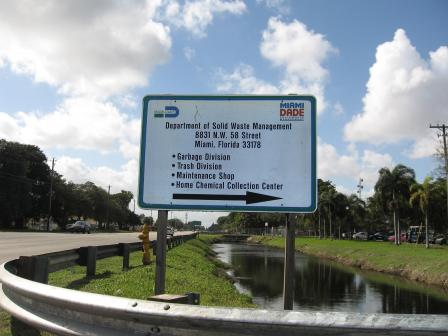 Northwest 58th Street LandfillThe 660-acre Northwest 58th Street Landfill Superfund site is located in Hialeah, Florida. From 1952 to 1982, Miami-Dade County operated a municipal landfill at the site. The landfill accepted municipal and industrial wastes. Improper storage and burning of waste on site resulted in the contamination of groundwater. In 1983, EPA added the site on the Superfund program’s National Priorities List (NPL). EPA issued a cleanup plan in 1987. The plan included the connection of private well users impacted by the landfill to the public water system; proper closure of the landfill; and the placement of controls to address leachate, landfill gas migration and odor. Miami-Dade County, the site’s potentially responsible party, led site investigation and cleanup activities, with oversight provided by EPA and the Florida Department of Environmental Protection. Although the site's landfill area is fenced and closed to the public, Miami-Dade County has started to allow school groups, bird watchers and other visitors on site with advanced notice to view the wetland area and associated wildlife. Visitors can walk along a crushed-stone trail that extends along most of the southern shore of the storm water management and restored wetland area. The site is also a staging area for management of hurricane debris. The southern portion of the site has been developed and put into reuse with a variety of municipal uses. Several Dade County facilities, including the Mosquito Control Division, Public Works, Fire and Public Safety Training Facilities, and South Florida Water Management District offices, are located on site. Miami-Dade County is currently determining potential reuse options for another portion of the site. The County's Park and Recreation Department is interested in developing a 15-field soccer complex on the southwest comer of the landfill.
Northwest 58th Street LandfillThe 660-acre Northwest 58th Street Landfill Superfund site is located in Hialeah, Florida. From 1952 to 1982, Miami-Dade County operated a municipal landfill at the site. The landfill accepted municipal and industrial wastes. Improper storage and burning of waste on site resulted in the contamination of groundwater. In 1983, EPA added the site on the Superfund program’s National Priorities List (NPL). EPA issued a cleanup plan in 1987. The plan included the connection of private well users impacted by the landfill to the public water system; proper closure of the landfill; and the placement of controls to address leachate, landfill gas migration and odor. Miami-Dade County, the site’s potentially responsible party, led site investigation and cleanup activities, with oversight provided by EPA and the Florida Department of Environmental Protection. Although the site's landfill area is fenced and closed to the public, Miami-Dade County has started to allow school groups, bird watchers and other visitors on site with advanced notice to view the wetland area and associated wildlife. Visitors can walk along a crushed-stone trail that extends along most of the southern shore of the storm water management and restored wetland area. The site is also a staging area for management of hurricane debris. The southern portion of the site has been developed and put into reuse with a variety of municipal uses. Several Dade County facilities, including the Mosquito Control Division, Public Works, Fire and Public Safety Training Facilities, and South Florida Water Management District offices, are located on site. Miami-Dade County is currently determining potential reuse options for another portion of the site. The County's Park and Recreation Department is interested in developing a 15-field soccer complex on the southwest comer of the landfill.
For more information:
Parramore Surplus
The 25-acre Parramore Surplus Company Superfund site is located in Mount Pleasant, Florida. The site is home to an active storage and resale company for U.S. Navy and Air Force surplus equipment. In the early 1970s, Parramore Surplus began purchasing products from various naval and air force bases. These products included paint residues, waste oil, alcohols and degreasers. In 1982, the Florida Department of Environmental Regulation inspected the site and found hundreds of drums, some of which had leaked, killing vegetation. EPA added the site to the Superfund program’s National Priorities List (NPL) in 1983, and developed a plan to clean up the site. The potentially responsible party financed the cleanup, which included removing drums and contaminated soil, as well as treating and monitoring the groundwater. In consultation with the State, EPA deleted the site from the NPL in 1989. The design of EPA’s cleanup plan enabled the surplus company to remain open for business, retaining jobs and income in the community as well as maintaining a safe working environment.
For more information:
Pepper Steel & Alloys, Inc.
The 25-acre Pepper Steel and Alloys, Inc. Superfund site is located near Medley, Florida, northwest of Miami. From the mid-1960s to the mid-1980s, a variety of industrial businesses operated at the site. These businesses included manufacturers, equipment repair shops, and a recycler. The firms disposed of trash and waste products, including rusted machinery and vehicles, tanks and batteries, on site. The last business closed by the mid-1980s, leaving the vacant site an attractive area for illegal dumping. The improper disposal practices contaminated site soil and ground water. In 1983, EPA added the site to the National Priorities List (NPL). With EPA and Florida Department of Environmental Protection oversight, the site’s potentially responsible parties lead site investigations and cleanup. Cleanup activities included removal and disposal of waste and debris as well as collection, treatment and capped storage of contaminated soils. The capped area containing the treated soil covers 11 acres. In 2005, a trucking company purchased part of the site for truck storage. A pre-cast concrete products company uses part of the site for its manufacturing operations.
For more information:
- Redevelopment of the Pepper Steel & Alloys Superfund Site (PDF)(1 pg, 76 K, About PDF)
- Superfund Site Profile Page
Petroleum Products Corp.
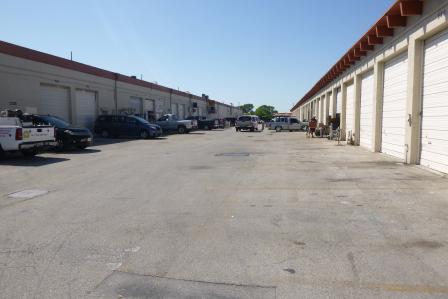 Petroleum Products Corp.The Petroleum Products Corp. Superfund site occupies 3 acres in Pembroke Park, Florida. Petroleum Products Corporation operated a used oil refining facility at the site from 1957 until 1971. Improper waste handling practices and oil spills resulted in the contamination of soil and groundwater. EPA added the site to the Superfund program’s National Priorities List (NPL) in 1987. Cleanup activities focused on waste oil recovery. EPA is conducting investigations to address remaining soil and groundwater contamination. The site is located in a commercial and industrial area. Pembroke Park Warehouses, a 400-unit storage facility, a shooting range and a restaurant are currently in continued use at the site.
Petroleum Products Corp.The Petroleum Products Corp. Superfund site occupies 3 acres in Pembroke Park, Florida. Petroleum Products Corporation operated a used oil refining facility at the site from 1957 until 1971. Improper waste handling practices and oil spills resulted in the contamination of soil and groundwater. EPA added the site to the Superfund program’s National Priorities List (NPL) in 1987. Cleanup activities focused on waste oil recovery. EPA is conducting investigations to address remaining soil and groundwater contamination. The site is located in a commercial and industrial area. Pembroke Park Warehouses, a 400-unit storage facility, a shooting range and a restaurant are currently in continued use at the site.
For more information:
Piper Aircraft Corp./Vero Beach Water & Sewer Department
The 80-acre Piper Aircraft Corp./Vero Beach Water & Sewer Department Superfund site in Vero Beach, Florida operates as an active manufacturing facility for small commuter and business planes. The facility began manufacturing airplanes in 1975. Soil and groundwater contamination resulted from a leaking underground storage tank that stored chemicals used in the manufacturing process by the company. To address contamination, Piper Aircraft installed a groundwater pump and treatment system in 1981. EPA added the site to the Superfund program’s National Priorities List in 1990. With EPA and Florida Department of Environmental Protection oversight, Piper Aircraft, the site’s potentially responsible party, leads site cleanup activities. A new groundwater extraction and treatment system began operation in 1998. Groundwater treatment and monitoring are ongoing. Piper Aircraft continues to operate on site.
For more information:
Raleigh Street Dump
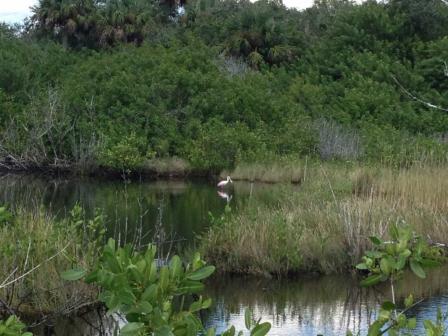 Raleigh Street DumpThe 5-acre Raleigh Street Dump Superfund site is located in Tampa, Florida. Various parties dumped wastes such as battery casings, furnace slag, as well as trash and construction debris on site from 1977 until 1991. In 1988, the Hillsborough County Environmental Protection Commission received complaints that Tampa Fiberglass improperly disposed of waste at the site. EPA added the site to the Superfund program’s National Priorities List (NPL) in 2009. Cleanup activities included the removal and disposal of contaminated soils, addition of clean soils, planting of grass seed, restoration of wetlands, monitoring of groundwater and limiting future site use. Fiberglass production continues on the southern portion of the site. Potentially responsible parties (PRPs) expanded the previously existing wetlands habitat, creating a wildflower and native grass meadow on the upland area. PRPs installed nesting boxes for small birds and created habitat brush piles. PRPs also installed a bat box to provide habitat to native Florida bats and planted two milkweed gardens to provide habitat for Monarch butterflies. At the 2015 Wildlife Habitat Council’s annual conservation conference, a PRP contractor, on behalf of the PRPs, accepted the “Rookie of the Year” Award for ecological restoration efforts at the site.
Raleigh Street DumpThe 5-acre Raleigh Street Dump Superfund site is located in Tampa, Florida. Various parties dumped wastes such as battery casings, furnace slag, as well as trash and construction debris on site from 1977 until 1991. In 1988, the Hillsborough County Environmental Protection Commission received complaints that Tampa Fiberglass improperly disposed of waste at the site. EPA added the site to the Superfund program’s National Priorities List (NPL) in 2009. Cleanup activities included the removal and disposal of contaminated soils, addition of clean soils, planting of grass seed, restoration of wetlands, monitoring of groundwater and limiting future site use. Fiberglass production continues on the southern portion of the site. Potentially responsible parties (PRPs) expanded the previously existing wetlands habitat, creating a wildflower and native grass meadow on the upland area. PRPs installed nesting boxes for small birds and created habitat brush piles. PRPs also installed a bat box to provide habitat to native Florida bats and planted two milkweed gardens to provide habitat for Monarch butterflies. At the 2015 Wildlife Habitat Council’s annual conservation conference, a PRP contractor, on behalf of the PRPs, accepted the “Rookie of the Year” Award for ecological restoration efforts at the site.
For more information:
Reeves Southeastern Galvanizing Corp.
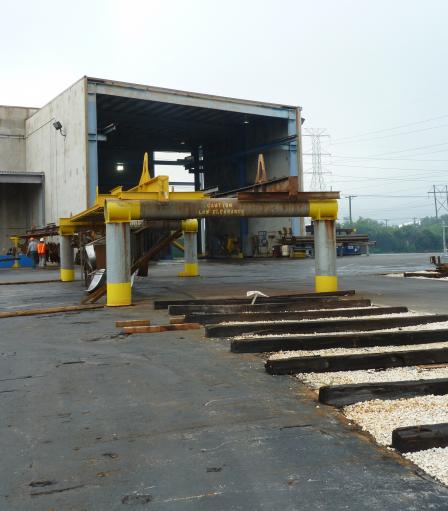 Reeves Southeastern Galvanizing Corp.The Reeves Southeastern Galvanizing Corp. Superfund site is located in Tampa, Florida. The site includes the 17-acre Reeves Southeastern Galvanizing facility and the 11-acre Reeves Southeastern Wire facility. Beginning in the 1960s, the Reeves facility’s disposed of waste disposal into ponds on site. This resulted in contamination of groundwater, sediment and soil. EPA added the site to the Superfund program’s National Priorities List (NPL) in 1983. Cleanup activities included removal, treatment and disposal of soil and sediment and a well survey. Monitoring of groundwater and area water bodies continues. Most of the site has remained in continued use throughout the cleanup. In March 1996, Industrial Galvanizers of America (IGA) leased a 10-acre portion of the property. Since that time, IGA has continued to operate a galvanizing facility on the site. In April 2001, Master-Halco, Inc. purchased Reeves Southeastern Corporation's Southeastern Wire Division, including the Southeastern Wire property. Master-Halco, Inc. has continued to operate a wire-fencing manufacturing facility on the Reeves Southeastern Wire property.
Reeves Southeastern Galvanizing Corp.The Reeves Southeastern Galvanizing Corp. Superfund site is located in Tampa, Florida. The site includes the 17-acre Reeves Southeastern Galvanizing facility and the 11-acre Reeves Southeastern Wire facility. Beginning in the 1960s, the Reeves facility’s disposed of waste disposal into ponds on site. This resulted in contamination of groundwater, sediment and soil. EPA added the site to the Superfund program’s National Priorities List (NPL) in 1983. Cleanup activities included removal, treatment and disposal of soil and sediment and a well survey. Monitoring of groundwater and area water bodies continues. Most of the site has remained in continued use throughout the cleanup. In March 1996, Industrial Galvanizers of America (IGA) leased a 10-acre portion of the property. Since that time, IGA has continued to operate a galvanizing facility on the site. In April 2001, Master-Halco, Inc. purchased Reeves Southeastern Corporation's Southeastern Wire Division, including the Southeastern Wire property. Master-Halco, Inc. has continued to operate a wire-fencing manufacturing facility on the Reeves Southeastern Wire property.
For more information:
Schuylkill Metals Corp.
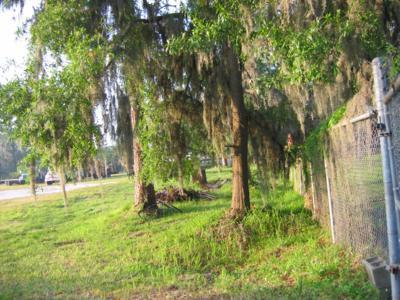 Schuylkill Metals Corp.The 17.4-acre Schuylkill Metals Corp. Superfund site is the former location of a battery recycling facility. The plant operated from 1972 to 1986 in Plant City, Florida. Improper waste management resulted in contamination of site soil, sediment, surface and groundwater. EPA placed the site on the Superfund program’s National Priorities List (NPL) in 1983. In June 1986, the facility closed. EPA’s 1990 cleanup plan included addressing contaminated soil, groundwater and on-site marshes. Cleanup activities included burying contaminated soils and sediment, then covering them with clean soil and plants. Today, cleanup activities are complete. EPA deleted the site from the NPL in 2001. The potentially responsible parties removed contamination from the site’s wetlands and replanted areas with native vegetation. The successful cleanup and restoration of the site created 11 acres of new wildlife habitat. Florida Department of Environmental Protection oversees protection of the new wetlands.
Schuylkill Metals Corp.The 17.4-acre Schuylkill Metals Corp. Superfund site is the former location of a battery recycling facility. The plant operated from 1972 to 1986 in Plant City, Florida. Improper waste management resulted in contamination of site soil, sediment, surface and groundwater. EPA placed the site on the Superfund program’s National Priorities List (NPL) in 1983. In June 1986, the facility closed. EPA’s 1990 cleanup plan included addressing contaminated soil, groundwater and on-site marshes. Cleanup activities included burying contaminated soils and sediment, then covering them with clean soil and plants. Today, cleanup activities are complete. EPA deleted the site from the NPL in 2001. The potentially responsible parties removed contamination from the site’s wetlands and replanted areas with native vegetation. The successful cleanup and restoration of the site created 11 acres of new wildlife habitat. Florida Department of Environmental Protection oversees protection of the new wetlands.
For more information:
Sherwood Medical Industries
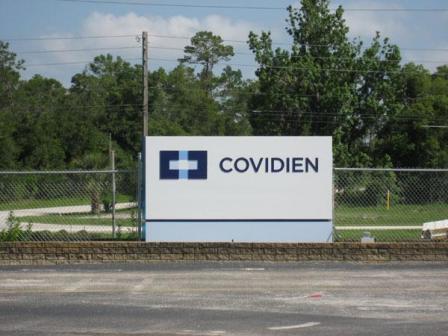 Sherwood Medical IndustriesThe 43-acre Sherwood Medical Industries Superfund site is located in DeLand, Florida. Since 1959, Sherwood Medical Industries manufactured medical supplies on the property. The company disposed of liquid and sludge wastes into tanks and ponds on site, contaminating groundwater and soils. EPA placed the site on the Superfund program’s National Priorities List (NPL) in 1983. Cleanup activities included collection, treatment and monitoring of groundwater, as well as surface water and sediment sampling. The site owners also test residential wells and enforce land use restrictions. Access to Miller Lake, which is partially located on site property, is also restricted. The potentially responsible party completed cleanup in 1997. The cleanup plan allowed for the continued use of the site throughout cleanup activities. Covidien Corporation currently manufactures medical supplies at the site and employs about 550 workers.
Sherwood Medical IndustriesThe 43-acre Sherwood Medical Industries Superfund site is located in DeLand, Florida. Since 1959, Sherwood Medical Industries manufactured medical supplies on the property. The company disposed of liquid and sludge wastes into tanks and ponds on site, contaminating groundwater and soils. EPA placed the site on the Superfund program’s National Priorities List (NPL) in 1983. Cleanup activities included collection, treatment and monitoring of groundwater, as well as surface water and sediment sampling. The site owners also test residential wells and enforce land use restrictions. Access to Miller Lake, which is partially located on site property, is also restricted. The potentially responsible party completed cleanup in 1997. The cleanup plan allowed for the continued use of the site throughout cleanup activities. Covidien Corporation currently manufactures medical supplies at the site and employs about 550 workers.
For more information:
Solitron Microwave
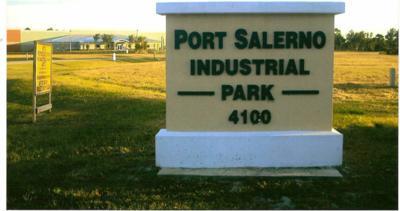 Solitron MicrowaveThe 20-acre Solitron Microwave Superfund site is located in Port Salerno, Florida. Metal plating and microwave manufacturing businesses operated on the site from 1963 until 1987. Manufacturers produced materials for the military, aerospace and microwave industries. Operations and leaking pipes and drum pads contaminated soil and groundwater. EPA placed the site on the Superfund program’s National Priorities List (NPL) in 1998. Started in 2000 and completed in 2004, the site’s cleanup included soil removal, groundwater treatment and extension of the public water supply to affected residents. Monitoring of the natural breakdown of contaminants in groundwater continues. EPA provided safety and liability information to local officials and prospective purchasers to promote reuse. Portions of the site are reserved for wetlands and a native plant habitat reserve. Port Salerno Industrial Park (PSIP), LLC purchased the site in 2003. PSIP worked with EPA to reuse the site as an industrial park for warehouse, office space and commercial facility. The industrial park consists of seven lots with a paved roadway. Stuart Web, Inc., a web printing services business, completed construction of their facility at the industrial park and began operations in 2006. CKO, a land development company in Martin County, purchased a lot in 2010 and built a warehouse to house site operations. CKO also purchased an additional lot in 2013 with plans to expand parking and facilities.
Solitron MicrowaveThe 20-acre Solitron Microwave Superfund site is located in Port Salerno, Florida. Metal plating and microwave manufacturing businesses operated on the site from 1963 until 1987. Manufacturers produced materials for the military, aerospace and microwave industries. Operations and leaking pipes and drum pads contaminated soil and groundwater. EPA placed the site on the Superfund program’s National Priorities List (NPL) in 1998. Started in 2000 and completed in 2004, the site’s cleanup included soil removal, groundwater treatment and extension of the public water supply to affected residents. Monitoring of the natural breakdown of contaminants in groundwater continues. EPA provided safety and liability information to local officials and prospective purchasers to promote reuse. Portions of the site are reserved for wetlands and a native plant habitat reserve. Port Salerno Industrial Park (PSIP), LLC purchased the site in 2003. PSIP worked with EPA to reuse the site as an industrial park for warehouse, office space and commercial facility. The industrial park consists of seven lots with a paved roadway. Stuart Web, Inc., a web printing services business, completed construction of their facility at the industrial park and began operations in 2006. CKO, a land development company in Martin County, purchased a lot in 2010 and built a warehouse to house site operations. CKO also purchased an additional lot in 2013 with plans to expand parking and facilities.
For more information:
- Reuse and the Benefit to Community: Solitron Microwave Case Study (2012) (PDF) (7 pp, 607 K, About PDF)
- Port Salerno Industrial Park Excellence in Site Reuse Award
- Superfund Site Profile Page
Southern Solvents, Inc.
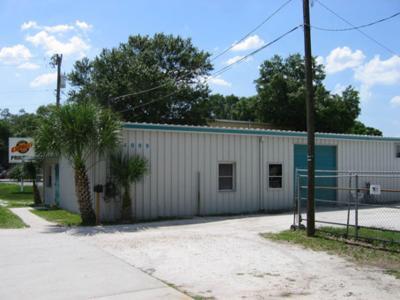 Southern Solvents, Inc.The Southern Solvents, Inc. Superfund site is located in Tampa, Florida. The 1-acre site formerly housed a dry cleaning solvents facility. The facility operated from the late 1970s to 1989. Spills from storage tanks on site contaminated soil and groundwater. EPA added the site to the Superfund program’s National Priorities List (NPL) in July 2000. Cleanup included removing and treating soil, treating groundwater. Groundwater use restrictions are in place. Since 1998, a commercial painting business, AAA Diversified Services, has operated at the site alongside remediation activities. EPA worked with AAA Diversified Services’ owner to coordinate cleanup activities. They also worked together to address potential liability concerns. In 2004, EPA entered into a prospective purchaser agreement with the owner. This agreement allowed AAA Diversified Services to purchase the property and continue operating the business. This working partnership demonstrates how EPA’s goals of protecting human health and the environment at contaminated properties can be achieved without creating unnecessary barriers for site users.
Southern Solvents, Inc.The Southern Solvents, Inc. Superfund site is located in Tampa, Florida. The 1-acre site formerly housed a dry cleaning solvents facility. The facility operated from the late 1970s to 1989. Spills from storage tanks on site contaminated soil and groundwater. EPA added the site to the Superfund program’s National Priorities List (NPL) in July 2000. Cleanup included removing and treating soil, treating groundwater. Groundwater use restrictions are in place. Since 1998, a commercial painting business, AAA Diversified Services, has operated at the site alongside remediation activities. EPA worked with AAA Diversified Services’ owner to coordinate cleanup activities. They also worked together to address potential liability concerns. In 2004, EPA entered into a prospective purchaser agreement with the owner. This agreement allowed AAA Diversified Services to purchase the property and continue operating the business. This working partnership demonstrates how EPA’s goals of protecting human health and the environment at contaminated properties can be achieved without creating unnecessary barriers for site users.
For more information:
Standard Auto Bumper Corp.
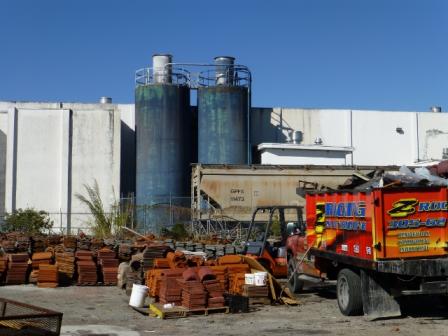 Standard Auto Bumper Corp.The 7-acre Standard Auto Bumper Corp. Superfund site is located in Hialeah, Florida. From 1959 until 1992, the Standard Auto Bumper Corporation operated a plating facility at the site. Operators initially discharged wastewater into a ditch behind the facility, then treated wastewater and discharged it to a percolation pit on site. These waste disposal practices led to contaminated soil and groundwater. As a result, EPA placed the site on the Superfund program’s National Priorities List (NPL) in 1989. In 1992, EPA selected a cleanup plan that included the removal and disposal of contaminated soil, groundwater monitoring and groundwater use controls. In 2007, EPA deleted the site from the NPL and restricted land use to clarify future site use potential. Today, three businesses operate on site. Services include truck parking, concrete fencing and roofing. A bakery and a furniture company are located on an area that became part of the site after EPA expanded the original site boundary.
Standard Auto Bumper Corp.The 7-acre Standard Auto Bumper Corp. Superfund site is located in Hialeah, Florida. From 1959 until 1992, the Standard Auto Bumper Corporation operated a plating facility at the site. Operators initially discharged wastewater into a ditch behind the facility, then treated wastewater and discharged it to a percolation pit on site. These waste disposal practices led to contaminated soil and groundwater. As a result, EPA placed the site on the Superfund program’s National Priorities List (NPL) in 1989. In 1992, EPA selected a cleanup plan that included the removal and disposal of contaminated soil, groundwater monitoring and groundwater use controls. In 2007, EPA deleted the site from the NPL and restricted land use to clarify future site use potential. Today, three businesses operate on site. Services include truck parking, concrete fencing and roofing. A bakery and a furniture company are located on an area that became part of the site after EPA expanded the original site boundary.
For more information:
Stauffer Chemical Co. (Tampa)
The 40-acre Stauffer Chemical Company (Tampa) Superfund site is located in an industrial area, of Tampa, Florida. From 1951 to 1986, the Stauffer Chemical Company used the site for production, packaging and distribution of agricultural chemical products, primarily pesticides. During facility operations, workers disposed of waste materials and chemicals by burning or burying them on site. These improper waste disposal practices resulted in contamination of site soil, sediments, surface water and area groundwater with pesticides. EPA added the site to the Superfund program’s National Priorities List (NPL) in 1996. Prior to listing on the NPL, EPA and Stauffer Management Company (SMC), the oversight body for the Stauffer Chemical Company, agreed to conduct initial cleanup to contain contaminants. Early cleanup efforts included removal of buried drums, contaminated soil and debris. EPA and SMC agreed to conduct additional cleanup and long-term maintenance activities that would allow for future reuse of the site. Cleanup included treatment of contaminated soil and sediment, and groundwater treatment. To ensure long-term protection, SMC secured materials with a protective cap. Currently, legal restrictions prohibit activities that could disturb the capped area. Parties cannot use groundwater at the site. Groundwater treatment continues. SMC monitors groundwater each year. In response to lost wetlands, a conservation easement now protects a 5.6-acre portion of the site as an ecological area. An additional site parcel is ready for reuse and available for redevelopment. EPA and site stakeholders will continue supporting reuse efforts at the site.
For more information:
Taylor Road Landfill
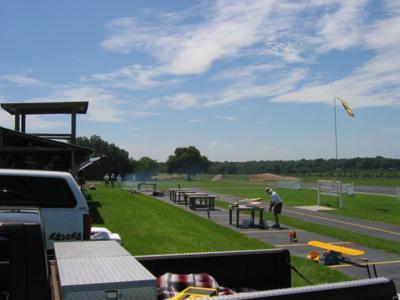 Taylor Road LandfillThe 42-acre Taylor Road Landfill Superfund site is located in Hillsborough County, Florida. The municipal landfill is one of three landfills owned and operated by Hillsborough County. In October 1979, EPA discovered contamination in site monitoring wells. In 1983, EPA added the site to the Superfund program’s National Priorities List (NPL). Hillsborough County closed all three landfills. Landfill closure activities included capping of waste, a vegetative cover, a gas collection system and a groundwater drainage system. The cleanup plan included addressing groundwater contamination, connecting nearby residences to the public water supply and restricting drinking water wells. EPA awarded Hillsborough County the 2010 EPA Region 4 Excellence in Site Reuse award for creatively reusing the site to serve multiple purposes that benefit the community. Hillsborough County established a recycling center, a community collection center, a household chemical and electronics collection center, a site maintenance facility and an environmental field office at the site. The County also uses a portion of the landfill to grow hay for erosion control. Hillsborough County collaborated with the Tampa Radio-Control Aircraft Club and the Academy of Model Aeronautics to build a model airplane park. The park includes a paved runway and covered work areas. TA Travel currently leases a strip of the property. Hillsborough County also collaborated with the U.S. Department of Energy on a study to evaluate the potential for using methane from landfills as a renewable energy source. This study provided valuable information on using landfill gas for power generation.
Taylor Road LandfillThe 42-acre Taylor Road Landfill Superfund site is located in Hillsborough County, Florida. The municipal landfill is one of three landfills owned and operated by Hillsborough County. In October 1979, EPA discovered contamination in site monitoring wells. In 1983, EPA added the site to the Superfund program’s National Priorities List (NPL). Hillsborough County closed all three landfills. Landfill closure activities included capping of waste, a vegetative cover, a gas collection system and a groundwater drainage system. The cleanup plan included addressing groundwater contamination, connecting nearby residences to the public water supply and restricting drinking water wells. EPA awarded Hillsborough County the 2010 EPA Region 4 Excellence in Site Reuse award for creatively reusing the site to serve multiple purposes that benefit the community. Hillsborough County established a recycling center, a community collection center, a household chemical and electronics collection center, a site maintenance facility and an environmental field office at the site. The County also uses a portion of the landfill to grow hay for erosion control. Hillsborough County collaborated with the Tampa Radio-Control Aircraft Club and the Academy of Model Aeronautics to build a model airplane park. The park includes a paved runway and covered work areas. TA Travel currently leases a strip of the property. Hillsborough County also collaborated with the U.S. Department of Energy on a study to evaluate the potential for using methane from landfills as a renewable energy source. This study provided valuable information on using landfill gas for power generation.
For more information:
- News Release: EPA Recognizes Hillsborough County, Fl., for Taylor Road Landfill Superfund Site Reuse
- Superfund Site Profile Page
Tower Chemical Co.
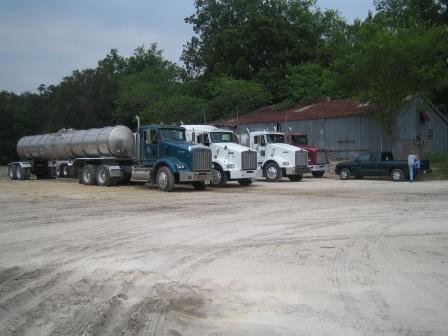 Tower Chemical Co.The 16-acre Tower Chemical Co. Superfund site is located about 5-miles east of Clermont, Florida. From 1957 to 1980, Tower Chemical Company operated a manufacturing facility on site. The facility’s waste disposal practices left contamination on site. EPA added the site to the Superfund program’s National Priorities List (NPL) in September 1983. Cleanup activities included the removal of soil, groundwater treatment and monitoring, and restrictions on land and groundwater use. In 2005, new owners purchased a 15-acre parcel of the site and converted the area into a storage facility for recreational vehicles, boats, trailers and other commercial vehicles. The owners cleared the remainder of the 15-acre parcel for future expansion. In 2006, a commercial trucking operation purchased the remaining portion of the site for use as an unpaved parking area for tractor-trailer tank trucks used to haul drinking water. That use has since been discontinued and the storage facility recently purchased the land.
Tower Chemical Co.The 16-acre Tower Chemical Co. Superfund site is located about 5-miles east of Clermont, Florida. From 1957 to 1980, Tower Chemical Company operated a manufacturing facility on site. The facility’s waste disposal practices left contamination on site. EPA added the site to the Superfund program’s National Priorities List (NPL) in September 1983. Cleanup activities included the removal of soil, groundwater treatment and monitoring, and restrictions on land and groundwater use. In 2005, new owners purchased a 15-acre parcel of the site and converted the area into a storage facility for recreational vehicles, boats, trailers and other commercial vehicles. The owners cleared the remainder of the 15-acre parcel for future expansion. In 2006, a commercial trucking operation purchased the remaining portion of the site for use as an unpaved parking area for tractor-trailer tank trucks used to haul drinking water. That use has since been discontinued and the storage facility recently purchased the land.
For more information:
Tri-City Oil Conservationist, Inc.
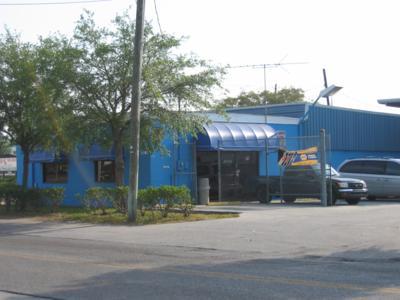 Tri-City Oil Conservationist, Inc.The quarter-acre Tri-City Oil Conservationist, Inc. Superfund site is located outside of Tampa, Florida. The site served as a waste oil storage and distribution center until 1983. Careless operating conditions at the site resulted in spills and leaks from tanks and lines. Failure to clean up these spills and poor surface drainage caused liquids to accumulate. In 1982, a 3,000-gallon spill of waste oil occurred at the Tri-City operation. The Florida Department of Environmental Regulation (FDER) identified contamination in soil and sludge samples from the spill area. After the owners refused a request by FDER to clean up the spill, EPA took immediate action to clean contamination at the site under the Superfund program. EPA listed the site on the Superfund program’s National Priorities List (NPL) in 1984. EPA removed and disposed of contaminated soil and removed storage tanks from the site. EPA then re-planted the area to prevent erosion. EPA deleted the site from the NPL in 1988. In 1990, Mike’s Garage purchased the property from the bankruptcy trustee and reused the original building as an auto repair business. The business proved to be so successful that the garage expanded in 1997 to include five service stations.
Tri-City Oil Conservationist, Inc.The quarter-acre Tri-City Oil Conservationist, Inc. Superfund site is located outside of Tampa, Florida. The site served as a waste oil storage and distribution center until 1983. Careless operating conditions at the site resulted in spills and leaks from tanks and lines. Failure to clean up these spills and poor surface drainage caused liquids to accumulate. In 1982, a 3,000-gallon spill of waste oil occurred at the Tri-City operation. The Florida Department of Environmental Regulation (FDER) identified contamination in soil and sludge samples from the spill area. After the owners refused a request by FDER to clean up the spill, EPA took immediate action to clean contamination at the site under the Superfund program. EPA listed the site on the Superfund program’s National Priorities List (NPL) in 1984. EPA removed and disposed of contaminated soil and removed storage tanks from the site. EPA then re-planted the area to prevent erosion. EPA deleted the site from the NPL in 1988. In 1990, Mike’s Garage purchased the property from the bankruptcy trustee and reused the original building as an auto repair business. The business proved to be so successful that the garage expanded in 1997 to include five service stations.
For more information:
United Metals
The 175-acre United Metals Inc. Superfund site, located in Marianna, Florida is about 1.5 miles east of the Chipola River. A battery recycling facility operated on 24 acres of the site from 1979 to 1991. Site operations caused the contamination of surface soil, sediment and groundwater. EPA placed the site on the Superfund program’s National Priorities List (NPL) in 2003. EPA removed hazardous waste debris and treated the soil and sediment before containing it in on-site cells covered with soil and a vegetated cap. EPA backfilled soil removal areas with clean topsoil and replanted 500 dogwoods. Groundwater monitoring is ongoing. The site is currently an auto salvage yard and portable storage container business.
For more information:
West Florida Natural Gas Company
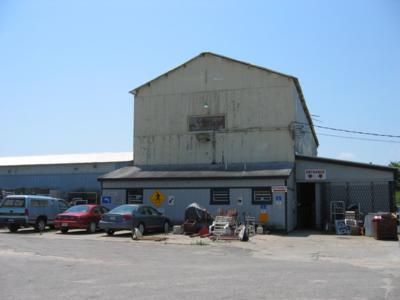 West Florida Natural Gas CompanyThe 8-acre West Florida Natural Gas Company Superfund site is located in Ocala, Florida. The site operated as a manufactured gas plant from 1895 until approximately 1960. Byproducts of the manufacturing processes were disposed of on the site. Former waste disposal practices resulted in soil and groundwater contamination. People’s Gas System, the potentially responsible party (PRP) for the site, removed and disposed of 10,000 tons of contaminated soil in 1990. The site is not listed on the Superfund program’s National Priorities List (NPL), but is considered an NPL-caliber site and is being addressed through the Superfund Alternative Approach. This approach uses the same investigation and cleanup process and standards used for sites listed on the NPL. Investigations to help develop a cleanup plan for the site are currently underway. The 2-acre southern portion of the site was the former location of the manufactured gas plant. It is covered by an 8-inch-thick concrete slab. Today, the 6-acre northern portion of the site operates as a scrap metal recycling facility.
West Florida Natural Gas CompanyThe 8-acre West Florida Natural Gas Company Superfund site is located in Ocala, Florida. The site operated as a manufactured gas plant from 1895 until approximately 1960. Byproducts of the manufacturing processes were disposed of on the site. Former waste disposal practices resulted in soil and groundwater contamination. People’s Gas System, the potentially responsible party (PRP) for the site, removed and disposed of 10,000 tons of contaminated soil in 1990. The site is not listed on the Superfund program’s National Priorities List (NPL), but is considered an NPL-caliber site and is being addressed through the Superfund Alternative Approach. This approach uses the same investigation and cleanup process and standards used for sites listed on the NPL. Investigations to help develop a cleanup plan for the site are currently underway. The 2-acre southern portion of the site was the former location of the manufactured gas plant. It is covered by an 8-inch-thick concrete slab. Today, the 6-acre northern portion of the site operates as a scrap metal recycling facility.
For more information:
Yellow Water Road Dump
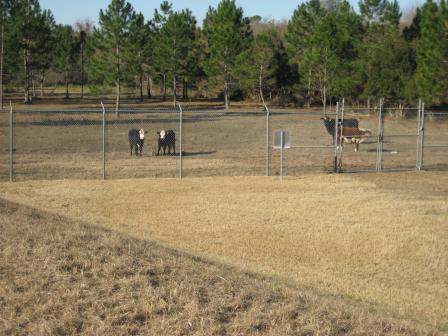 Yellow Water Road DumpThe Yellow Water Road Superfund site is located in Baldwin, Florida. In the late 1940s, Robert Tyler purchased the property, formerly a dairy farm, with plans for commercial development. In 1981, the American Environmental Energy Corporation, the American Electric Corporation and the American Environmental Protection Corporation joined together to start a disposal facility at the site. In the process, chemicals spilled onto and contaminated the soil. EPA added the site to the Superfund program’s National Priorities List (NPL) in 1986. Cleanup activities included treating contaminated soil, monitoring groundwater, and restricting well water use and certain land uses in the area. Cleanup concluded in 1996. EPA deleted the site from the NPL in 1999. EPA’s carefully selected cleanup plan, and cooperation and open communication between site stakeholders has enabled the continued use of part of the site for horse and cattle grazing.
Yellow Water Road DumpThe Yellow Water Road Superfund site is located in Baldwin, Florida. In the late 1940s, Robert Tyler purchased the property, formerly a dairy farm, with plans for commercial development. In 1981, the American Environmental Energy Corporation, the American Electric Corporation and the American Environmental Protection Corporation joined together to start a disposal facility at the site. In the process, chemicals spilled onto and contaminated the soil. EPA added the site to the Superfund program’s National Priorities List (NPL) in 1986. Cleanup activities included treating contaminated soil, monitoring groundwater, and restricting well water use and certain land uses in the area. Cleanup concluded in 1996. EPA deleted the site from the NPL in 1999. EPA’s carefully selected cleanup plan, and cooperation and open communication between site stakeholders has enabled the continued use of part of the site for horse and cattle grazing.
For more information:
